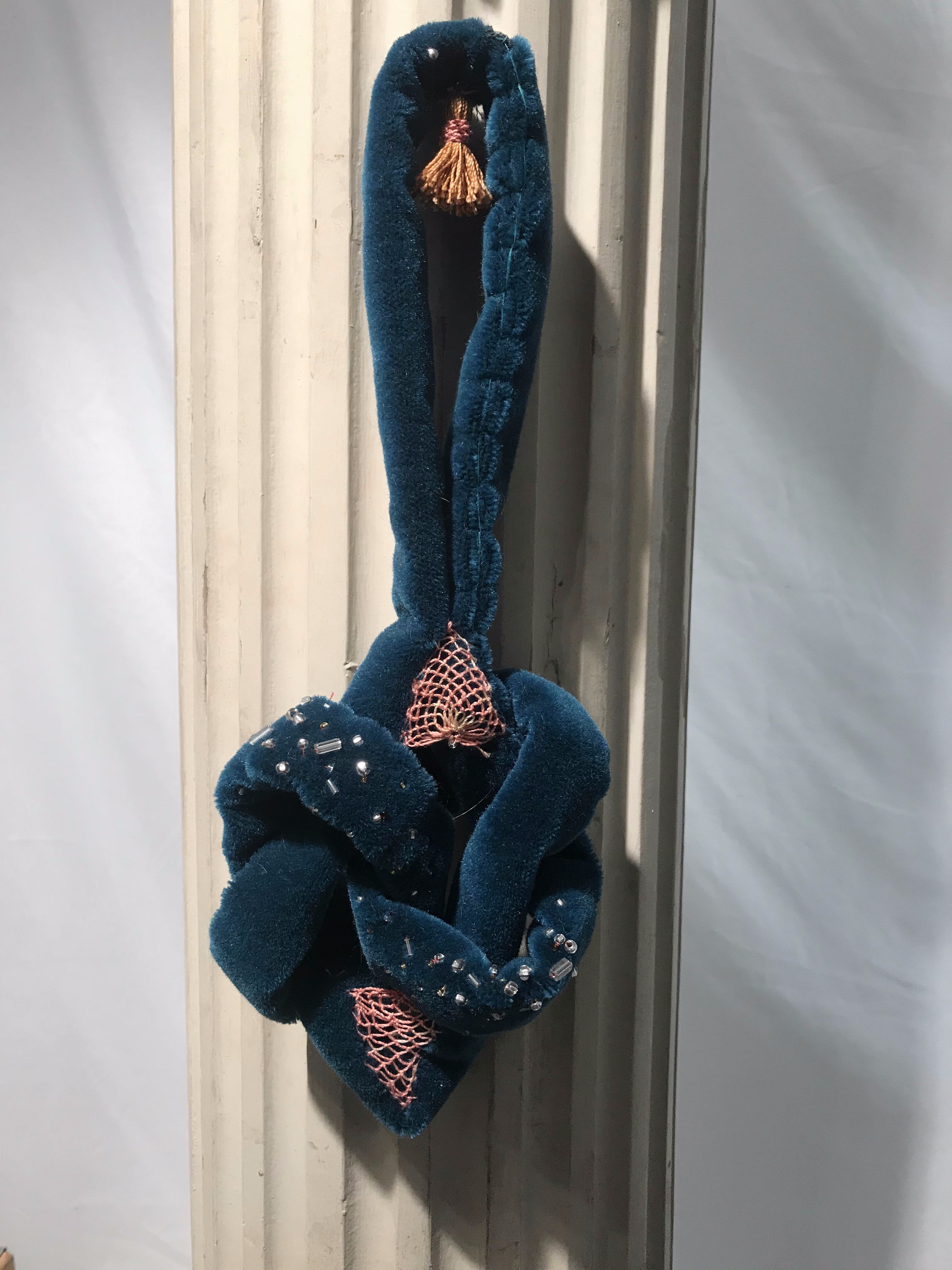Kim, Kourtney, Khloe
Velvet upholstery fabric, vintage “silkateen” pearl cotton, glass beads
This series references the woven forms and colors seen in the margins of Armenian illuminated manuscripts and translates them into cloth knots. The knots contain both thick, hand-sewn velvet cords and fine cotton thread knotted into traditional Armenian needlelace. Velvet, often used as a display mechanism to raise the status of lace from “craft” to “art,” now takes on a different role, central to the knotted structure of the forms that intersects structurally with the needlelace.
The work aims to subvert gendered materiality and the problematic and often sexualized notions of orientalism with the traditions of DIY femininity and adornment, including lace, beading and tassels.
These objects position the visual language of Armenian illuminated manuscripts, an art controlled by patriarchs, under domestic and feminine terms. Named for three of the most famous Armenian women in the diaspora who are often dismissed as vapid or materialistic, these forms consider cultural, material and economic hierarchies and the intersections of ancient and pop culture institutions.
Artist Statement
My work, primarily weaving, and lacemaking, interrogates my Armenian identity after two generations of assimilation in the United States. Focusing on the transcription and translation of the language of knotted textile crafts in Armenian folk culture, I utilize historical research about the history of cloth techniques including heritage needlelace, which underwent a value shift from an intimate process done in service of a dowry to a craft brought to marketplace to enable the survival of the makers, primarily women, after the genocide in the beginning of the twentieth century.
The work interconnects gendered histories and the material of inheritance with language and theory that dismantle shame as it is weaponized against those that have been abused and oppressed. By incorporating markers of femininity and sexuality with very demanding and labor-intensive textile processes, including Armenian needlelace, the work aims to create space for a slow read into the deeply gendered and colonized histories of materials often dismissed as simply decorative.
Through a combination of research and textile-making, embedding language within cloth is fundamental to the meaning of my process. The material transcriptions between graphic text or image and cloth reflect the translations and mistranslations of textile traditions that have moved throughout the diaspora in the quest for preservation.


